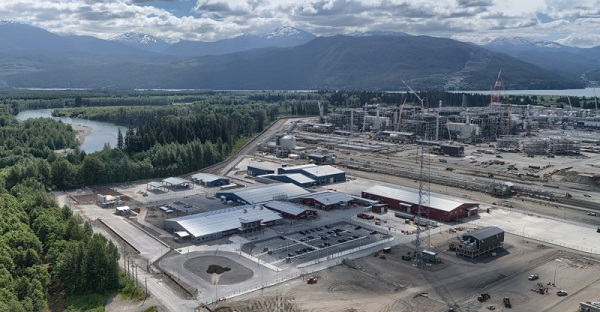Energy
Ottawa’s emissions cap—all pain, no gain

From the Fraser Institute
By: Julio Mejía, Elmira Aliakbari and Tegan Hill
According to a recent analysis by the Conference Board of Canada think-tank, the cap could reduce Canada’s GDP by up to $1 trillion between 2030 and 2040, eliminate up to 151,000 jobs by 2030, reduce federal government revenue by up to $151 billion between 2030 and 2040, and reduce Alberta government revenue by up to $127 billion over the same period.
According to an announcements last week by Premier Danielle Smith, the Alberta government will use the Alberta Sovereignty within a United Canada Act to challenge Ottawa’s proposal to cap greenhouse gas emissions from the oil and gas sector at 35 per cent below 2019 levels by 2030.
Premier Smith, who said the cap will harm the economy and represents an overstep of federal authority, also plans to prevent emissions data from individual oil and gas companies from being shared with Ottawa. While the federal government said the cap is necessary to fight climate change, several studies suggest the cap will impose significant costs on Canadians without yielding detectable environmental benefits.
According to a recent report by Deloitte, a leading audit and consulting firm, the cap will force Canadian firms to curtail oil production by 626,000 barrels per day by 2030 or by approximately 10.0 per cent of the expected production—and curtail gas production by approximately 12.0 per cent.
Deloitte estimates that Alberta will be hit hardest, with 3.6 per cent less investment, almost 70,000 fewer jobs, and a 4.5 per cent decrease in the province’s economic output (i.e. GDP) by 2040. Ontario will lose 15,000 jobs and $2.3 billion from its economy by 2040. And Quebec will lose more than 3,000 jobs and $0.4 billion from its economy during the same period.
Overall, the country will experience an economic loss equivalent to 1.0 per cent of the value of the entire economy (GDP), translating into lower wages, the loss of nearly 113,000 jobs and a 1.3 per cent reduction in government tax revenues. Canada’s inflation-adjusted GDP growth in 2023 was a paltry 1.3 per cent, so a 1 per cent reduction would be a significant economic loss.
Deloitte’s findings echo previous studies. According to a recent analysis by the Conference Board of Canada think-tank, the cap could reduce Canada’s GDP by up to $1 trillion between 2030 and 2040, eliminate up to 151,000 jobs by 2030, reduce federal government revenue by up to $151 billion between 2030 and 2040, and reduce Alberta government revenue by up to $127 billion over the same period.
Similarly, another recent study published by the Fraser Institute found that the cap would reduce production and exports, leading to at least $45 billion in lost economic activity in 2030 alone, accompanied by a substantial drop in government revenue.
Crucially, these huge economic costs to Canadians will come without any discernable environmental benefits. Even if Canada entirely shut down its oil and gas industry by 2030, eliminating all GHG emissions from the sector, the resulting reduction in global GHG emissions would amount to a mere four-tenths of one per cent with virtually no impact on the climate or any detectable environmental, health or safety benefits.
Given the demand for fossil fuels, constraining oil and gas production and exports in Canada would likely merely shift production to other countries with lower environmental and human rights standards such as Iran, Russia and Venezuela. Consequently, global GHG emissions would increase, not decrease. No other major oil and gas-producing country has imposed a similar cap on its leading export sector.
The Trudeau government’s proposed cap, which still must pass the House and Senate, would further strain an already struggling Canadian economy, and to make matters worse, do virtually nothing to improve the environment. The government should cancel the cap plan given the economic costs and nonexistent environmental benefits.
Julio Mejía
Policy Analyst
Elmira Aliakbari
Director, Natural Resource Studies, Fraser Institute
Tegan Hill
Director, Alberta Policy, Fraser Institute
Alberta
Temporary Alberta grid limit unlikely to dampen data centre investment, analyst says
From the Canadian Energy Centre
By Cody Ciona
‘Alberta has never seen this level and volume of load connection requests’
Billions of investment in new data centres is still expected in Alberta despite the province’s electric system operator placing a temporary limit on new large-load grid connections, said Carson Kearl, lead data centre analyst for Enverus Intelligence Research.
Kearl cited NVIDIA CEO Jensen Huang’s estimate from earlier this year that building a one-gigawatt data centre costs between US$60 billion and US$80 billion.
That implies the Alberta Electric System Operator (AESO)’s 1.2 gigawatt temporary limit would still allow for up to C$130 billion of investment.
“It’s got the potential to be extremely impactful to the Alberta power sector and economy,” Kearl said.
Importantly, data centre operators can potentially get around the temporary limit by ‘bringing their own power’ rather than drawing electricity from the existing grid.
In Alberta’s deregulated electricity market – the only one in Canada – large energy consumers like data centres can build the power supply they need by entering project agreements directly with electricity producers.
According to the AESO, there are 30 proposed data centre projects across the province.
The total requested power load for these projects is more than 16 gigawatts, roughly four gigawatts more than Alberta’s demand record in January 2024 during a severe cold snap.
For comparison, Edmonton’s load is around 1.4 gigawatts, the AESO said.
“Alberta has never seen this level and volume of load connection requests,” CEO Aaron Engen said in a statement.
“Because connecting all large loads seeking access would impair grid reliability, we established a limit that preserves system integrity while enabling timely data centre development in Alberta.”
As data centre projects come to the province, so do jobs and other economic benefits.
“You have all of the construction staff associated; electricians, engineers, plumbers, and HVAC people for all the cooling tech that are continuously working on a multi-year time horizon. In the construction phase there’s a lot of spend, and that is just generally good for the ecosystem,” said Kearl.
Investment in local power infrastructure also has long-term job implications for maintenance and upgrades, he said.
“Alberta is a really exciting place when it comes to building data centers,” said Beacon AI CEO Josh Schertzer on a recent ARC Energy Ideas podcast.
“It has really great access to natural gas, it does have some excess grid capacity that can be used in the short term, it’s got a great workforce, and it’s very business-friendly.”
The unaltered reproduction of this content is free of charge with attribution to the Canadian Energy Centre.
Energy
LNG Export Marks Beginning Of Canadian Energy Independence

From the Frontier Centre for Public Policy
Kitimat’s LNG launch ends years of delay, weak policy and lost opportunity. This is a strategic turning point for Canada
Last week marked a turning point for Canadian sovereignty. On July 1, 2025, the tanker Gaslog Glasgow departed Kitimat, B.C., carrying Canada’s first-ever commercial liquefied natural gas (LNG) export to Asia. More than a shipment, it signalled the end of our economic vassalage to the United States and a long-overdue leap into global energy markets.
LNG Canada CEO Chris Cooper called it a “truly historic moment.” He’s right. The cargo left just days after the Kitimat plant produced its first liquefied natural gas and entered operation. The $40-billion megaproject, the largest private-sector investment in Canadian history, is now a fully functional Pacific Coast export hub. It can ship up to 14 million tonnes annually, and expansion is already being discussed.
Yet this success didn’t come easily. Despite being one of the world’s largest natural gas producers, Canada lacked an LNG export terminal, largely due to political delays, regulatory hurdles and lack of federal support. That this happened at all is remarkable, given nearly a decade of federal sabotage. Prime Minister Justin Trudeau’s ideological hostility to natural gas meant rebuffed allies, stalled projects and choked-off investment.
Foreign leaders (from Japan and Germany to Greece) practically begged Ottawa to green-light Canadian LNG. Trudeau dismissed them, claiming there was “no business case.” No one in his caucus dared contradict him. The result: lost time, lost markets and a near-complete surrender of our energy advantage.
But the business case was always there. Kitimat proves it.
The U.S. has been exporting LNG since 2016, giving them a nearly decade-long head start. But Canada has something our neighbours don’t: the Montney Formation. Spanning northeast B.C. and parts of Alberta, it covers about 130,000 square kilometres and holds enormous gas reserves. Montney gas, abundant and close to tidewater, trades at roughly half the Henry Hub price, giving Canada a significant cost edge.
Location seals the deal. Kitimat, perched on the Pacific, bypasses the congested Panama Canal, a major chokepoint for U.S. Gulf Coast exports, and offers a shorter, more direct route to energy-hungry Asian markets. This geographic advantage makes Canadian LNG not only viable but globally competitive.
In 2024, Canada exported about 8.6 billion cubic feet of gas daily to the U.S. via pipeline. With Kitimat, we finally begin breaking that one-market dependency. We also start clawing back the price differential losses that come with being captive sellers. This is how you build productivity, strengthen the dollar and reclaim economic independence from Washington.
The economic ripple effect is massive. The Kitimat build created 50,000 jobs at its peak, generated $5.8 billion in Indigenous and local contracts and left behind more than 300 permanent positions. Provincial revenues are projected in the tens of billions. In an era of anaemic growth, this is real stimulus and has staying power.
Predictably, critics raise environmental concerns. But this critique ignores global realities. Exporting Canadian natural gas to countries still burning coal is not a step backward—it’s a practical advance. Natural gas is up to 25 per cent cleaner than coal when comparing full lifecycle emissions (that is, from extraction to combustion). Global emissions don’t respect borders. If Canada can displace dirtier fuels abroad, we’re part of the solution, not the problem.
And this is only the beginning. Cedar LNG and Woodfibre LNG are already under construction. Atlantic Coast projects are in the queue. We must now defend this momentum against bureaucratic delays, activist litigation and ideological roadblocks.
LNG is not a climate villain. It’s a bridge fuel that cuts emissions, creates wealth and helps fund our national future.
Marco Navarro-Genie is vice-president of research at the Frontier Centre for Public Policy and co-author, with Barry Cooper, of Canada’s COVID: The Story of a Pandemic Moral Panic (2023).
-

 Uncategorized14 hours ago
Uncategorized14 hours agoCNN’s Shock Climate Polling Data Reinforces Trump’s Energy Agenda
-

 illegal immigration2 days ago
illegal immigration2 days agoICE raids California pot farm, uncovers illegal aliens and child labor
-

 Frontier Centre for Public Policy14 hours ago
Frontier Centre for Public Policy14 hours agoCanada’s New Border Bill Spies On You, Not The Bad Guys
-

 Opinion6 hours ago
Opinion6 hours agoPreston Manning: Three Wise Men from the East, Again
-

 Addictions6 hours ago
Addictions6 hours agoWhy B.C.’s new witnessed dosing guidelines are built to fail
-

 Business4 hours ago
Business4 hours agoCarney Liberals quietly award Pfizer, Moderna nearly $400 million for new COVID shot contracts
-

 Business1 day ago
Business1 day agoTrump to impose 30% tariff on EU, Mexico
-

 Energy1 day ago
Energy1 day agoLNG Export Marks Beginning Of Canadian Energy Independence









